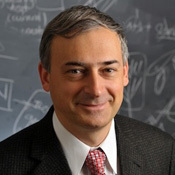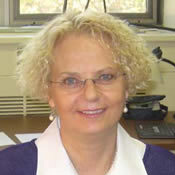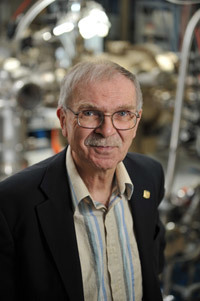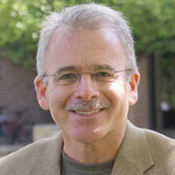
Four College of Science Notre Dame faculty members have been named fellows of the American Association for the Advancement of Science (AAAS) in honor of their scientifically or socially distinguished efforts to advance science or its applications.
AAAS, founded in 1848 as a nonprofit association, is the world’s largest scientific society and publisher of the prestigious journal Science.
The new Notre Dame AAAS fellows are: Mark Alber, Vincent J. Duncan Family Professor of Applied Mathematics, concurrent professor of physics and computer science and engineering, director, Interdisciplinary Center for the Study of Biocomplexity and adjunct professor of medicine, Indiana University School of Medicine; Margaret Dobrowolska, Rev. John Cardinal O’Hara, C.S.C., Professor of Physics; Jacek Furdyna, professor of physics, Aurora and Thomas Marquez Professor of Information Theory and Computer Technology and professor of physics; and Gary Lamberti, professor and chair of the Department of Biological Sciences.
Mark Alber

Alber, a member of the Notre Dame faculty since 1990, was cited for “distinguished contributions to the mathematical and computational modeling of dynamic biological processes, in particular, blood clot formation and swarming of bacteria.” His research interests include mathematical and computational biology, multi-scale modeling and scientific computing. In particular, he developed combined simulation and laboratory approaches for studying how members of any dense bacterial swarm spread efficiently while being able to perceive and interfere minimally with the motion of others, resulting in better understanding of the spread of infection.
Margaret Dobrowolska

Dobrowolska, a member of the Notre Dame faculty since 1988, was cited for “seminal experimental studies of semiconductor materials and tireless contributions to undergraduate education and outreach to local communities on energy conservation.” She specializes in magnetospectroscopy of semiconductor heterostructures — systems composed of ultrathin layers of different semiconductor compounds, with thickness in the range of a few atomic monolayers. Most recently, her interest has focused on structures in which some layers are magnetic, which also affords the possibility of investigating the effect of reduced dimensionality on magnetic properties of such structures.
Jacek Furdyna

A member of the Notre Dame faculty since 1987, Furdyna was cited for “transformative discoveries in preparation and characterization of many semiconductor systems, including magnetic semiconductors, semiconductor quantum wells, superlattices, and self-assembled quantum dots.” He specializes in the design and development of new semiconductor materials, including magnetic semiconductors aimed at performing new and extremely fast functions in computers. The new functionality of these materials is based on the use of electron spin (in addition to its charge) in the design of electronic circuits, which is expected to lay the groundwork for non-volatile magnetic memories for the next generation of computing systems.
Gary Lamberti

Lamberti, who joined the Notre Dame faculty in 1989, was cited for “distinguished contributions to the field of aquatic science, particularly for advancing our knowledge of food web interactions and stream ecology.” His primary research interests are in stream and watershed ecology and include identifying and remediating human impacts on aquatic ecosystems; the ecology of native and introduced Pacific salmon; and the control of invasive aquatic organisms. He conducts research in Alaska and around the Great Lakes, where he investigates methods to restore degraded streams, rivers and wetlands that provide important ecosystem services and support unique biodiversity.
The tradition of AAAS fellows began in 1874 and this year the association is honoring 539 individuals as fellows. Currently, members can be considered for the rank of fellow if nominated by the steering group of the Association’s 24 sections, by three fellows, or by the Association’s chief executive officer. Each steering group then reviews the nominations of individuals within its respective section and forwards a final list to the AAAS Council.
The AAAS Council votes on the final aggregate list. The Council is the policy making body of the Association, chaired by the president, and consisting of the members of the board of directors, the retiring section chairs, delegates from each electorate and each regional division, and two delegates from the National Academies of Science.
The four new College of Science fellows will be presented with an official certificate and gold (representing science) rosette pins on Feb. 18 during the 2012 AAAS annual meeting in Vancouver, B.C., Canada.
Originally published by at newsinfo.nd.edu on December 20, 2011.